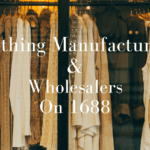When cheaper price tag meets the quality; Chinese goods occupy nearly 70 – 80% of the Malaysian market and with the convenience of the Internet, “anyone and everyone can import” is becoming a common trend.
With the implementation of several policies in Malaysia in 2017 and the official launch of Alibaba in Malaysia, the implementation of the DFTZ (Digital Free Trade Zone), ensure that e-commerce will explode in the next few years, and the era of small and micro enterprises will come.
If we are to take this journey, how do we start? Many people think of importing and selling goods from China, but because of various factors, many people are unable to.
Today we will talk about the six issues of Chinese imports and how to treat the correct attitude of Chinese imports.
Searching For A Good Supplier

Its implementation is well-developed in the Internet. Finding vendors is not a big problem. China’s major platforms such as Alibaba and global source are well developed. There are many ways to find a good supplier, for example, look at their number of transactions, customer evaluation and so on, and this kind of platform has been well supervised for several years. If used properly, it is not difficult to find high-quality suppliers.
China has many world-scale wholesale markets. The most famous are:
Zhejiang Yiwu Small Department Store Wholesale City
Guangzhou Humen Garment Wholesale City
Guangdong Zhongshan Lighting Wholesale City
Shenzhen Huaqiang North Electronics Wholesale
There are many places that are not listed. Actually, you can check online or with some experienced friends around you. Buying a direct plane ticket for field trips and on-site purchases can be a good way.
The transportation cost is too high and too complicated

The fact that international transportation involves a wide range of aspects and the complexity of the process has become one of the reasons why many people are afraid to import. China’s transportation to Malaysia involves warehouses, customs declarations by Chinese customs, shipping companies, Malaysian customs, warehouses, road delivery and so on. It is a very verbose, complex, and unspoken rules that many industries need to adapt to.
However, there are some Chinese-Malaysian transport lines in the market today, which are already the tedious things that can help you solve all these problems. Finding a good transportation company will become your key to success.
The services provided by these transportation companies are generally similar and the prices are almost the same. Therefore, service attitudes have become the key. Because such transportation companies have been dealing with China for a quite a while, they generally know very well what we need. Therefore, consults for information is a good pipeline.
The person who care for our transport companies, will become a very important person. We must check the arrival of goods in Hong Kong. For example, which goods can be shipped, help with remittances, the connection of suppliers, the GST plan, and so on., that can bring a multiplier effect to our work.
Choosing a transportation company is absolutely the most important service quality. If there is nine out of ten questions they can’t solve, even if they are having a cheaper service price, it will be not worth it to have a delay major events for such amount of money spend.
The tedious steps of international remittances for company accounts

People who have handled international remittances will know that international remittances seem to be a profound knowledge, what is the difference between the exchange of U.S. dollars and the yuan? How do you observe the movement of the exchange rate? Why did I go to the bank to send U.S. dollars to China? In the end, the auditor handed in the K1 form and why does Bank Negara ask me to report remittance information?
If we are importing goods in a small bucks, all these problems can be solved by the transportation companies. The transport companies that we mentioned above, which specialize in the China-Malaysia line, generally will provide remittance services. The fee is very cheap, and the exchange rate is much better than the bank. If the company has GST registered, some of the transportation companies can also provide a purchase tax invoice, which directly saves a lot of documentation.
What is wrong with the goods?

There was a story that circulated few years ago. A Malaysian businessman purchased a container of shoes from China. The goods arrived in Malaysia once a day. The merchants could not wait to open the container. After a closer look, the entire container’s shoes were only consists of “right foot”, and do not have any “left foot”, when the businessman rushes to contact the supplier, the reply is “Oh, I didn’t know you were purchasing for both sides, I taught it was for the right side only. Anyway what size do you want for the Left Foot?
I don’t know if this story is true, but unsurprisingly it may happen. Generally, there are several ways to avoid this problem.
Go to the supplier factory or go to the site to confirm that it is a real factory.
During the first purchase, the supplier can send a person to check randomly (randomly checking) and shipped it to Malaysia.
Look for a third-party inspection company to go to the company’s warehouse for inspection. If it is found to be wrong, return it immediately.
Suggested for these practices for the first few steps to be done for several times, only then can you determine the supplier professional ethics.
What about quality problems?

In the past, there is a mentality that “Made in China” has become a symbol of “low quality”. However, with the rapid progress of China in recent years, the quality of “Made in China” can already be comparable to many European and American countries, and it even has nothing to do with it. But, because of too many manufacturers it results in the uneven quality of the goods.
When we go to China for procurement, the supplier may tell us that “this product has a two-year warranty period and if there any problem, it can be brought back to us for warranty.” It is quite impossible to brought a handful of goods back to China from Malaysia because of the high cost and plus, Chinese customs are very strict in this matter. It is hard to find a single transportation company that can charter and return businesses to China, so don’t trust the “warranty”.
In general, how do we solve this problem? First, our profit margin must be sufficient to cover these warranted goods. One thousand pieces of goods must have a damage rate of 3 to 5%, so we must take that into account. The second solution is to talk to suppliers and ask them to give more time for preparations, which is to provide a buffer unit for the warranty.
This article is more suitable for some beginners importer entry, in the future we will add more intermediate and advanced import knowledge, like our Facebook Page “CIEF Worldwide Sdn Bhd” in order to get more information.













